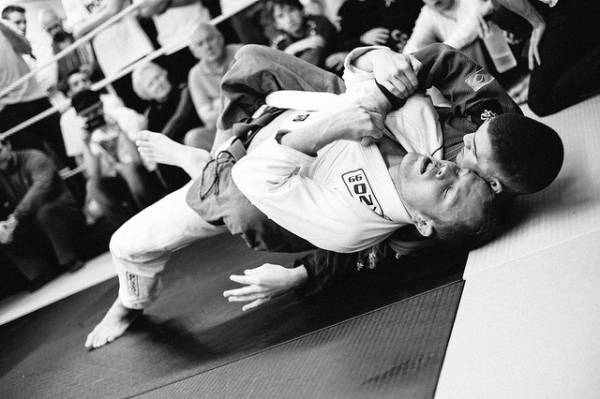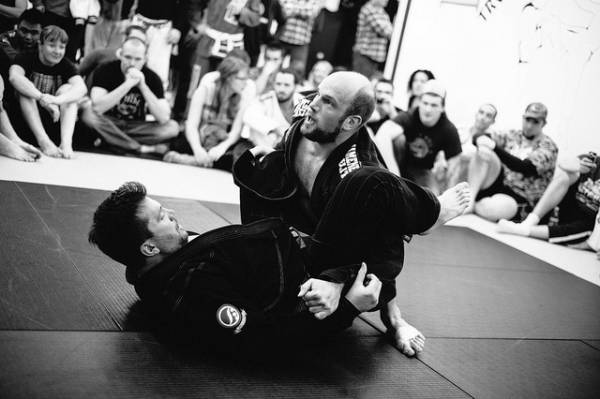Photos provided by David Brown Photography.
The longer I train jiu jitsu, the more I learn about what I don’t know. Throughout my time training, acquaintances who have reached black belt level have observed it is when we earn the black belt that we can actually start learning. And at the risk of sounding paternalistic, the longer I stay in the game, the more I see how true it is that people who are just starting out don’t know what they don’t know.
This is certainly true in terms of technique. I can’t count the number of times I have seen relatively new practitioners drill a movement pattern ten or so times and then have their drilling time devolve into coffee hour. (Yes, sadly I’ve been guilty of this too – in the ancient past, is my story.) When questioned, these practitioners say, “Yeah, I got it,” and go back to chatting, unless admonished by their coaches either to continue training or go to Starbucks. They don’t know how uninformed their comments are, because they don’t know how little they know this movement pattern. As I’ve mentioned elsewhere, really committed people drill movements thousands of times to develop facility, and they learn tiny details each time that raise their level of sophistication with the movement. Indeed, author Malcolm Gladwell identifies 10,000 as the magic number of hours it takes to become an expert at anything.
Another aspect of not knowing how much they don’t know is that newer practitioners also don’t know how much their instructors do know, specifically how much more they know than newbies. Without the understanding that high levels of sophistication only come with high numbers of reps and hours of thinkwork, it is virtually impossible for newer people to be able to appreciate that sophistication. In other words, they only see the tip of the iceberg of the possible level of skill and understanding. And in my experience, over time the iceberg continually turns out to be far larger than I ever imagined it could be.
This phenomenon is amplified by the fact that instructors will generally try to deliver information consistent with the athletes’ comprehension level. They don’t open both barrels of knowledge and let ‘er rip. And since instructors will also frequently dial back their training level to match or be just higher than that of their students, it can become dangerously easy for students to underestimate the distance between their own level of understanding and the level of understanding of their instructors.
 That’s one iceberg. But there is another one newer students should also know about, and that’s the one related to sacrifice, choices, and dues paying. What I mean is, everyone I know who has achieved any success in grappling, whether in competition, in teaching, or in earning the next belt, has only done so because they were willing to make tradeoffs, sometimes big ones.
That’s one iceberg. But there is another one newer students should also know about, and that’s the one related to sacrifice, choices, and dues paying. What I mean is, everyone I know who has achieved any success in grappling, whether in competition, in teaching, or in earning the next belt, has only done so because they were willing to make tradeoffs, sometimes big ones.
If you train, what you see of your favorite teachers/competitors/DVD instructional stars is how well they roll, the heart they show at tournaments, and their willingness and ability to break down technique for you. But this is just the tip of this second iceberg. What you might not realize is that these people may very well be living paycheck to paycheck or have done so in the past, crashing at their academies and/or mopping mats in exchange for training. They may have injuries that require surgery, but they may not have good (or any) health insurance, which means just taping up and hoping for the best. Or if they do have insurance, this could mean months of rehab, possibly months of trying to work around the recovery to continue to make a living.
These people have likely spent many nights sleeping in airports on the way to and from competitions and seminars, expended lots of effort trying to explain to non-practitioners why on Earth they do what they do, eaten “lunch” at 4:00pm and “dinner” at midnight after hard training sessions. Even if they don’t need surgery right now, chances are they are nursing some kind of injury, more likely multiple ones. And against their better judgment, they are getting older. They won’t be in the prime of their lives forever, and that has implications for what they will be able to accomplish in the future and how much time they have to accomplish it.
 Of course, these are all the result of choices these people have made of their own accord, and if they had wanted to live a different kind of life, they could have made different choices. But for them, the tradeoffs are worth what they gain in terms of being able to pursue excellence in something they love. Most of them wouldn’t change a minute of their experience.
Of course, these are all the result of choices these people have made of their own accord, and if they had wanted to live a different kind of life, they could have made different choices. But for them, the tradeoffs are worth what they gain in terms of being able to pursue excellence in something they love. Most of them wouldn’t change a minute of their experience.
But all this is all the more reason for all of us to understand the magnitude of that iceberg. We all benefit from the choices and sacrifices higher-level grapplers have made, through access to their knowledge, experience, and insight. But we do not have to bear the burden of these choices or sacrifices. So the next time you find yourself wanting to roll your eyes because you don’t want to drill, or complaining that “you’d be as good as XXX if you could train full time like him/her,” think twice. Consider instead thanking your coach for taking the time to help you get better. If you meet one of your grappling heroes, thank him or her for setting the standard. And then, as grapplers like to say, go train jiu jitsu.






